Floral Essential Oils That are Mesmerising With Benefits.
- Roslinda Schwencke
- Oct 5, 2022
- 8 min read
Updated: Jan 6, 2023
Why not start now if you have not started enjoying aromatherapy as part of your natural beauty and healthy lifestyle? And what could be better for the season than floral essential oils? Try some floral essential oils for stress, tiredness, burnout, or sleeping issue.
Floral Essential Oils that Fused with the Beneficial Flowery Aroma!!
The need for something natural and pure in day-to-day life for healthy well-being; Floral essential oils can be the answer. These naturally extracted oils are fused with the flowery and plant-like aroma, and the beneficial properties of the plants not only make your skincare regimen more apt but will also boost your lifestyle with its characteristics.
With Therapeutic Properties. Use the Floral Essential Oils in Day-To-Day Life.
The naturally extracted essential oils are known worldwide and have a rich history for their remarkable and commendable properties. Apart from medicinally, there are many other ways to use these essential oils to help lead a well-maintained and easy-going life. Floral essential oils have many effective remedial properties because of their characteristic aroma. These amazing oils can be the best option for a relaxing home spa session to help calm the stressed nerves, whether about having a stressful day at work or a disturbed mind.
Floral essential oils are very useful to have around the home. Just blend any oil under this category with a carrier oil like Calendula or Apricot carrier oil and massage on the forehead for a soothing effect or inhale the relaxing aroma of these oils for sound sleep, as they have sleep-promoting properties. So, to ease and aid individual problems, consider these unique beneficial and effective floral oils for most skin, health, and mental well-being. If there is an intention to start planning to include Floral essential oils in your daily schedule, read through the basic facts and questions to have in mind about Floral essential oils.
What Does Floral or Blossom Essential Oil Mean? Like naturally extracted essential oils, plants also contain certain aromatic oils in a concentrated form, commonly known as Absolutes. If talking about the difference between absolute and essential oils, it is merely about extracting them. The absolutes are extracted by solvent extraction, while the essential oils are extracted using other methods like steam distillation.
Back to floral essential oils are aromatic oils extracted from the major parts of the plants, like petals, organically and naturally to ensure the best quality of oil produced. These oils have the characteristic aroma of the parent plants, flowers, herbs, or roots from which they are extracted. They are the concentrated oils that are suggested to be used wisely.
How Are Floral Absolute Oils Extracted? The extraction process of absolutes is a bit complex as the process of solvent extraction extracts these oils. This whole method deploys chemical solvents, more often Hexane and Ethyl alcohol, because of their chemical composition and the ability to retain the oil in good quality and with their characteristic aroma.
First, the raw plant material is extracted with the help of a hydrocarbon like Hexane, and then the end product of this process is again extracted with Ethanol. In the final step, the Ethanol evaporates, and the product left behind is absolute oil. Here, Hexane brings about the concreted form and with the help of Ethyl Alcohol, plant waxes and other similar constituents are removed from the final extracted outcome.
Floral Essential Oils for Aromatherapy
Each essential oil listed below can be used alone or blended with other essential oils to create your signature daily perfume; for the diffuser to use in a home or car,
relaxing bath salts, aromatherapy candles, household spray, or make scented oil sachets.
Ambrette Seed. Botanical Name: Abelmoschus Maschatus Medik
Blend best with Amyris, Bergamot, Cedarwood, Frankincense, Galbanum, Gurjun balsam, Juniper berry, Lavender, Mandarin, Mimosa, Myrrh, Orange, Patchouli, Peppermint or Spruce.

Benzoin Botanical Name: Styrax benzoin
Blends well with amber, bergamot,
frankincense, Juniper, lavender, lemon, myrrh, orange, patchouli, and rose.

Bergamot Botanical Name: Citrus bergamia.
Blends well with cypress, orange, and vetiver.

.
Camellia Botanical Name: Camellia sinensis or oleifera

Cassie Flower Botanical Name: Acacia farnesiana wild
Blends well with other floral notes such as Rose and Jasmine, as well as woody, musky and amber, Bergamot, Mimosa, Costus, Agleia, Henna, Jasmin, Boronia and Ylang-ylang
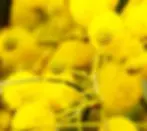
Carnation Botanical Name: Dianthus Caryophyllus
blends well with clary sage, coriander, grapefruit, jasmine, lavender, patchouli, rose and ylang-ylang.

German chamomile Botanical Name: Matricaria recutita or chamomilla
Roman Chamomile Botanical Name: Chamaemelum nobile
The sweetly scented oil blends well with lavender, lemon, and ylang-ylang.

Champaca Botanical Name: Michelia Champaca
Blend well with Rose, Jasmine, Ylang Ylang, Neroli, Sandalwood and other floral scents and all citrus oils

Cherry blossom is also known as Sakura. Botanical Name: Prunus serrulata
Blend with Rose, Orange, Vanilla, Mandarin Orange, Lavender, Rose Geranium, and Sandalwood.

Cyclamen
Botanical name: Cyclamen persicum. Mixes well with Lavender, Lemon, Clary Sage, Myrrh Nutmeg and Clove Bud

Frangipani Botanical Name: Plumeria obtusa
Blends Well With Bergamot, Clary Sage, Clove Bud, Coriander Seed, Ginger, Grapefruit, Lemon, Mandarin, Neroli (Orange Blossom), Orange, Palmarosa, Patchouli, Petitgrain, Rose, Sandalwood and Ylang Ylang.

Gardenia Botanical Name: Gardenia Grandiflora
Blends well with cinnamon leaf, clove bud, jasmine, lemon, lime, neroli, rose, sweet orange, Tuberose and ylang ylang

Geranium: Botanical Name: Pelargonium Graveolens.
Rose Geranium Botanical Name: Pelargonium roseum
Blends well with Basil, Lavender, Rose, Lemon, Sweet Orange, Petitgrain, Jasmine, Bergamot, Patchouli, Clary Sage, Lime, Tangerine, Grapefruit, Black pepper, Vetiver, Juniper berry

Orchid Botanical name: Oncidium Sphacelatum Orchidaceae family.
Blends Well With Citronella, Geranium, Lavender, Rose, Anise, Eucalyptus, and Kieffer Lime.

Orris Botanical Name: Iris Pallida
Orris Oil Blends with Vetiver, Frankincense, Rose, Jasmine, Ylang, all Citrus, and Lavender.
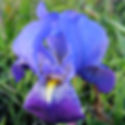
Osmanthus Botanical Name: Osmanthus Fragrans
Blends well with Ginger, Lemon, Lime, Linden Absolute, Lotus Absolute, Mandarin, Orange, Rose Otto, Sandalwood, Spikenard and Vanilla. Popular in perfumery.

Peony Botanical Name: Paeonia Suffruticosa
Blends Well With Lavender, Rose, Orange, Lemon, Jasmine and most other floral scents.


Ginger lily Botanical Name: Hedychium Spicatum
Blends Well With Sandalwood, Jasmine, Cassia, Balsam Peru, Cinnamon, Frankincense, Ginger, Lavandin, Lavender, Myrrh, Patchouli, Vanilla, and Ylang Ylang.
Helichrysum Botanical Name: Helichrysum Italicum:
Helichrysum Botanical Name: Helichrysum Gymnocephalum
Blends well with bergamot, chamomile, and lavender.

Hibiscus Botanical Name: Hibiscus Sabdariffa Blends with: Ylang Ylang, Geranium, and Lavender

Honeysuckle Botanical Name: Lonicera Caprifolium
Blends well with Jasmine, Ylang Ylang, Frankincense, Orange, Sandalwood, Bergamot, Neroli and citrus oils
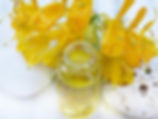
Hyacinth Botanical name: Hyacinthus orientalis
It blends well with Narcissus, Violet, Ylang Ylang, Styrax, Jasmine, Orange Blossom, and Oriental-type bases.

Jasmine Grandiflorum Botanical Name: Jasminum Grandiflorum
Jasmine Sambac Botanical Name: Jasminum sambac
Blends well with bergamot rose, Chamomile, Grapefruit, Lemon, Lime, Sandalwood Ylang Ylang and citrus oil.

Labdanum Botanical Name: Cistus Ladaniferus.
Blends Well With. Bergamot, chamomile, clary sage, cypress, frankincense, lavender, Juniper, oakmoss, opopanax, patchouli, pine, sandalwood, and vetiver.

Lavender: Botanical name Lavandula angustifolia
Blends well with Rose, Geranium, Frankincense, Vetiver, Pine, Lemon, Tangerine, Patchouli, bergamot, Sweet Orange, Cedarwood, Neroli, Petitgrain, Grapefruit, Rosemary, Clary Sage


Lilac Botanical Name: Syringa vulgaris (Oleaceae)
Blends well with: Jasmine, Rose, Neroli, Ylang, Geranium, Vanilla, Lavender, Melissa, Frankincense, Lemon, Bergamot, Grapefruit, Lime, and Chamomile.
Lily Botanical Name: Lilium auratum
Blends well with other oils such as Cinnamon, Clove Bud, Jasmine, Neroli, Ylang Ylang and Citrus Oils.


Pink & White Lotus Botanical Name: Nelumbo Nucifera.
Blue Lotus Botanical Name: Nymphaea caerulea,
Blends well with spicy scents, like cinnamon and sandalwood.
Monarda Botanical Name: Monarda Fistulosa
Blends Well With Basil, Roman Chamomile, Rose Otto, Geranium, Frankincense
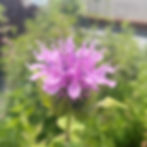
Mimosa Botanical Name: Acaica Mirensi
Blends Well With Frangipani Enfleurage Oil, Organic, Lavender Essential Oil, Wild, Lemon Essential Oil, Neroli Essential Oil – Orange Blossom, Osmanthus Absolute, Patchouli Essential Oil, Rose Otto

Narcissus Essential Oil Botanical Name: Narcissus poeticus
Complex, rich, floral, a perfume in and of itself. Blends well with Jasmine, Ylang, Rose, Spikenard, Vetiver, Vanilla, Bergamot, Grapefruit, and Lemon.

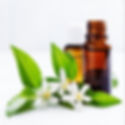
Neroli: Botanical Name: Citrus
aurantium
Blends well with jasmine, lavender, and rosemary.
Rose Damascena Botanical Name: Rosa Damascena Mill.
Blends well with geranium and jasmine.

Tuberose Botanical Name: Polianthes tuberosa
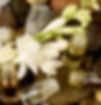
Blends Well With Agarwood, Ambrette, Amyris, Balsam of Peru, Beeswax, Bergamot and other Citrus oils, Boronia, Carnation, Carrot, Cassie, Champaca, Clary Sage, Clove, Coriander, Davana, Frangipani, Ginger, Hay, Helichrysum, Jasmine, Lime, Linden Blossom, Liquidambar, Mandarin, Mimosa, Nagarmotha, Opopanax, Orange (Bitter), Orange Blossom, Orris, Osmanthus, Patchouli, Rose, Sandalwood, Tonka Bean, Turmeric, Verbena, Vetiver, Ylang Ylang. Tuberose is used in high-class floral perfumes of the heaviest and sweetest types.
"Small doses enhance light florals with the body."
Tulip Botanical Name: Tulipa Gesneriana
Blends well with white gardenia, Tuberose and musk for an inviting aroma every time!
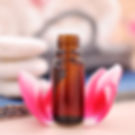
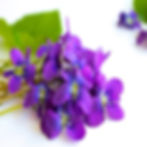
Violet Leaf Botanical Name: Viola odorata
Violet Leaf blends well with other essential oils and is perfect as a fixative. Specific pairings include Tuberose, oils from the floral family, Clary Sage, Lavender, Benzoin, Cumin, Basil, oils from the citrus family, Sandalwood, Geranium, and oils from the spice family.
Ylang Ylang: Botanical Name: Cananga odorata var genuine,
Blends well with bergamot, citrus oils, and sandalwood.
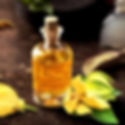
Before we go further into the benefits of floral essential oils and wonder, what is with Floral essential oil in aromatherapy, and does it work? In aromatherapy, Floral or Blossom essential oils treat physical and psychological symptoms and bring about a balance. Floral Essential Oils offer a bouquet of delicate scents from your favourite blooms. But these beauties are certainly no shrinking violets. They come with a host of powerful feel-good benefits.
Floral essential oils are highly concentrated; hence, they can be harmful if not used carefully. Be it about using them in aromatherapy or for skin and health purposes, one should know how to use them and dilute them so that you can be well on your way to safe use. Precautious ways are listed to be helpful for the ones who are stepping into aromatherapy essential oil for the first time. But, do not consider guidelines as only safety references for properly using these oils. It is also advisable to consult the doctor before including them in your daily regimen.
Danièle Ryman, one of the world's leading aromatherapists, even uses essential oils to alleviate hormonal disruption from menopause. Ryman says essential oils "can influence a sluggish system and assist during hard times", including florals like chamomile, geranium, and rose.

Therapeutics Roles of Floral Oils for Healthy Bodies, Skin, and Well-Being
Naturally extracted floral essential oils are highly in demand in the beauty, and medicinal health industries, like for preparing perfumery and fragrances besides aromatherapy treatments, not only because of their amazing and characteristic aroma but due to the remarkable properties these oils possess. Looking into properties that make them this beneficial to every individual needs:
As Antidepressants
These floral essential oils are also loaded with effective repellent properties that are extremely helpful in killing the bacteria that cause infections. Essential oils such as Lemongrass, Eucalyptus, and Tea Tree oil are the most used.
As an Astringent
The astringent of the essential oils makes it ideal for speeding up the recovery of minor wounds, bites, sores, and scars. Floral essential oils can also be effective at relieving the signs of ageing with their skin tightening and lifting potential.
As Fungicides
These floral oils can effectively treat most forms of fungal infection like athlete's foot and 'itch' as the properties of the essential oil's ability to kill infectious bacteria, viruses, and dead cells.
With Inflammatory Properties
Massaging floral essential oils to the affected area may help with pain-relieving and soothe the sore muscles for certain cramps or weight-lifting periods. These oils penetrate the skin's surface and reach deep down to the affected muscle or nerve, relaxing them and ultimately relieving the pain. Avoid painkiller pills going through the whole body system.
As an Aphrodisiac
Many Floral essential oils can also be used for their aphrodisiac properties. Just take a bath with lukewarm water mixed with the Rose, Tuberose or Lotus essential oil, spray the bedroom or drop behind the ears, and experience new feelings and moods.
As a Cicatrisant
Some Floral Absolute oils have effectively faded dark spots and scars. These oils can help increase the number of red blood cells that flow towards a wound or scar and ultimately enable a faster and smoother healing process that results in their fading and disappearance.
How to Use Floral Essential Oils? Floral Essential Oils should be treated as any other essential oil. It is a must to know the first and foremost rule of using these oils is to blend them with a perfect and prominent carrier oil that can carry your absolute oil perfectly and will enhance the effectiveness of your oil with absolute floral oils for skincare or healthy life. Click for further reading: How Do I Choose and Use Essential Oils?






